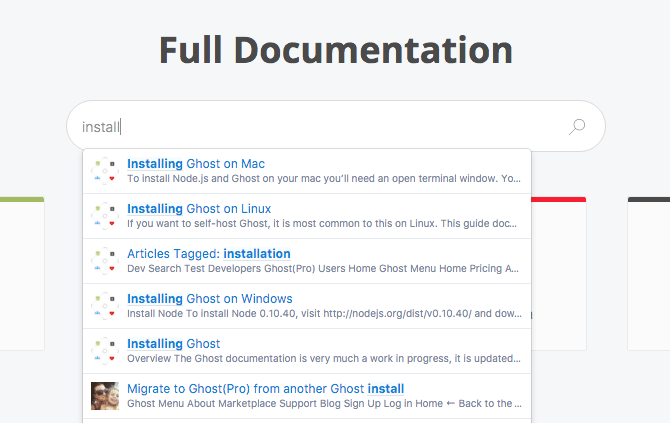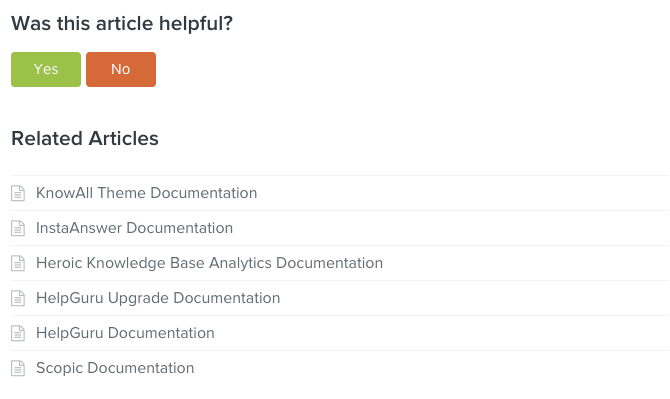Our Knowledge Base plugin gives you a great head start when it comes to organizing content for your users and displaying it effectively on your WordPress site, but there’s still plenty of heavy lifting to be done on a page-by-page level.
In this piece, we’ll tackle the nitty-gritty of best practice for individual entries, with a series of common sense tips for tackling the components of an individual knowledge base article. Follow them closely and you’ll find yourself reliably turning out content that solves user problems quickly, and with a minimum of fuss.
Let’s start with the number one thing you can do to make writing practically any piece of content substantially simpler.
1. Never Write Without an Outline
If you take nothing else away from the article, remember this: writing content of any kind without an outline is a recipe for procrastination, delay, frustration, and a far from polished piece.
Assuming you have a clear general idea in your head of what the particular article should be covering, make sure you’ve put together a complete outline covering the flow of points you’re going to address in the piece before you write a word.
Don’t be afraid to spend some time on this stage. As the old saying goes: “measure twice, cut once”. If your article doesn’t make sense in outline format, it’s never going to stand up as an actual piece.
2. Don’t Get Fancy With Your Title
You’re not looking to showcase your love of puns or clever allusions here. You’re looking to match what customers are actually searching for as closely as possible, and signpost obvious solutions to common problems.
With that in mind, keep things simple and spend some time scouring your site search records and support requests for common queries that users are already looking for answers to.

Also take a little extra time in crafting the meta description of your page. After the title, this is the first piece of text users will see when they’re searching for an answer to their problem. Make sure you’ve got a crisp summary in place that will get them to your site.
3. Focus on Style and Structure
Content will naturally vary wildly from site to site, but there is a common style most knowledge base articles should be aiming for: friendly, direct, and written from the user’s point of view.
Avoid overly complex sentence constructions and the temptation to drift into the passive voice. Keep in mind at all times: users aren’t reading these pages because something wonderful has recently happened, they’re there to quickly solve a problem that’s vexing them and move on with their lives.
Also remember, users may be operating with substantially less context than you are as the author of a piece or owner of a product. Don’t make assumptions about their knowledge, and factor in that your article may have to address audiences with varying levels of expertise.
When it comes to structure, your outline should already have imposed some order. Follow through on that good work by making your content straightforward to scan by using appropriate headings, bullet points, and use of paragraphs. Nothing is more irritating than hitting an intimidating wall of undifferentiated text when you are looking for the one nugget of info that can fix things.
4. Make the Most of Multimedia
If your knowledge base content isn’t full to bursting with useful image and video content, you’re probably going about it the wrong way.
There’s no excuses for not getting this right these days. Sophisticated screenshot tools such as Skitch and Snagit abound across the web, and solutions such as Camtasia and Jing make putting together video walkthroughs a snap for even the most technically challenged.
5. Close With Clear Next Steps and Relevant Further Resources
Ideally, your knowledge base article has comprehensively addressed the user’s problem by the time they hit the end. If that’s not the case, however, don’t leave them hanging!

Be sure to give readers clear next steps if they still find themselves stuck, and take the extra time to put relevant further resources within easy reach at the foot of the article.
6. Actively Solicit Feedback
Your knowledge base articles should be constantly updated works in progress. Make sure you’re actively encouraging your readers to help plug the gaps in your current efforts by providing feedback on each entry.
The perfect knowledge base article is one which has been honed over time in response to how well it actually performs solving a problem in the wild. You’ll find article feedback and analytics options baked into our Knowledge Base plugin to help you reliably execute on this.
Conclusion
With the right tools to hand, putting together a great knowledge base article is largely a question of constantly keeping the user perspective in mind and applying some common sense concepts to your content.
Let’s recap our main pointers for getting it right:
- Always start with an outline before writing.
- Keep your title simple and on point.
- Write plainly and simply with the user in mind, and format extensively.
- The right images and video will save your users oceans of time. Find them, and use them.
- Always close with further options and resources people can turn to if stuck.
- Actively solicit feedback, and commit to constantly revisiting your articles.
Do you have any tips and tricks to share, or suggestions based on your own experience crafting knowledge base articles? Get in touch via the comments section below and let us know!
The post How to Put Together a Perfect Knowledge Base Article appeared first on HeroThemes.
